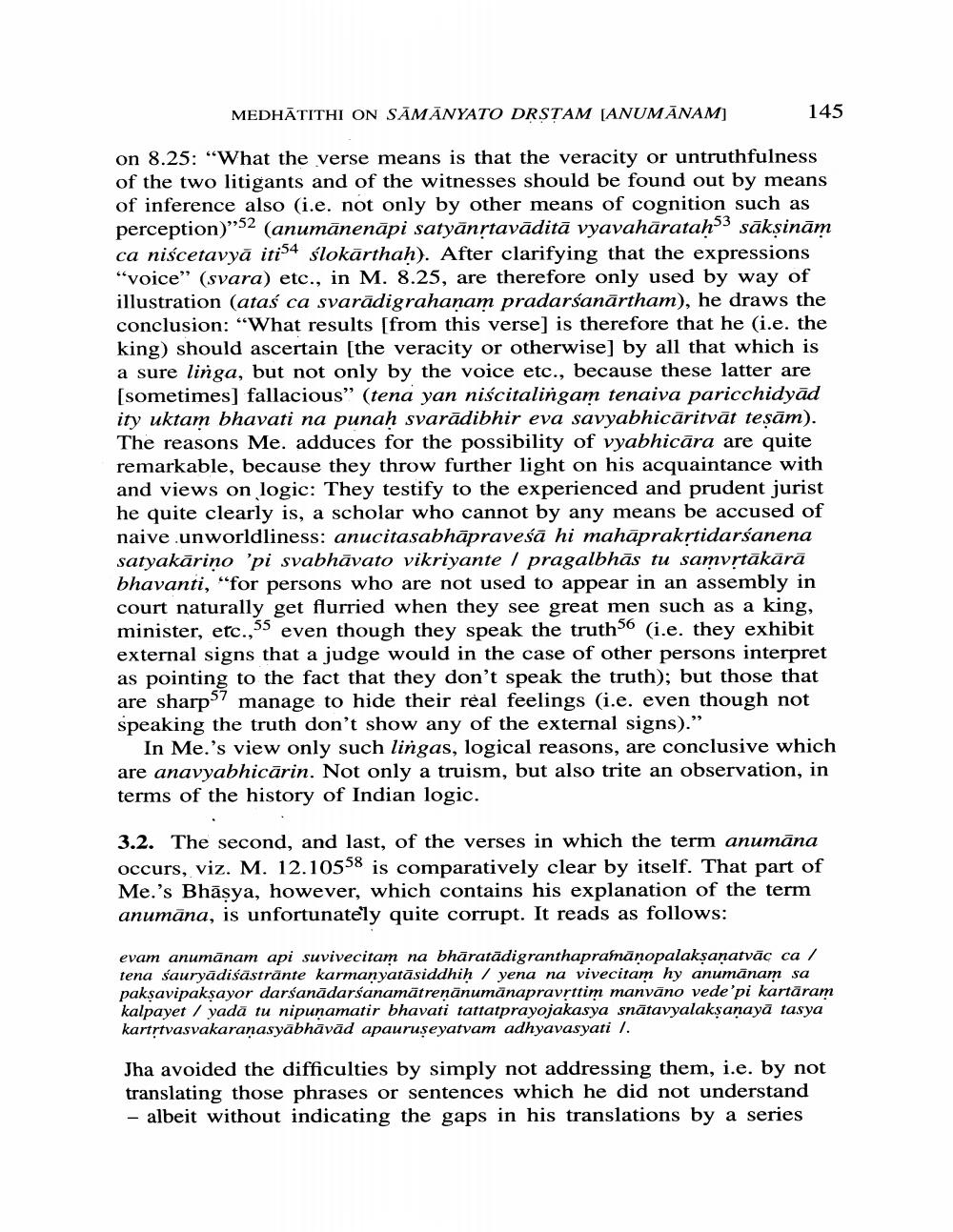________________
MEDHATITHI ON SĀMĀNYATO DRSTAM (ANUMĀNAM]
145
on 8.25: "What the verse means is that the veracity or untruthfulness of the two litigants and of the witnesses should be found out by means of inference also (i.e. not only by other means of cognition such as perception)"52 (anumānenāpi satyānrtavāditā vyavahāratah” sāksinām ca niścetavyā iti$4 slokārthah). After clarifying that the expressions “voice" (svara) etc., in M. 8.25, are therefore only used by way of illustration (ataś ca svarādigrahanam pradarśanārtham), he draws the conclusion: “What results [from this verse] is therefore that he (i.e. the king) should ascertain [the veracity or otherwise) by all that which is a sure linga, but not only by the voice etc., because these latter are [sometimes] fallacious” (tena yan niścitalingam tenaiva paricchidyād ity uktam bhavati na punah svarādibhir eva savyabhicăritvāt teșām). The reasons Me. adduces for the possibility of vyabhicāra are quite remarkable, because they throw further light on his acquaintance with and views on logic: They testify to the experienced and prudent jurist he quite clearly is, a scholar who cannot by any means be accused of naive unworldliness: anucitasabhāpraveśā hi mahāprakrtidarśanena satyakārino 'pi svabhāvato vikriyante / pragalbhās tu samvrtakārā bhavanti, "for persons who are not used to appear in an assembly in court naturally get flurried when they see great men such as a king, minister, etc.,55 even though they speak the truth $6 (i.e. they exhibit external signs that a judge would in the case of other persons interpret as pointing to the fact that they don't speak the truth); but those that are sharp57 manage to hide their real feelings (i.e. even though not speaking the truth don't show any of the external signs)."
In Me.'s view only such lingas, logical reasons, are conclusive which are anavyabhicārin. Not only a truism, but also trite an observation, in terms of the history of Indian logic.
3.2. The second, and last, of the verses in which the term anumāna occurs, viz. M. 12.10558 is comparatively clear by itself. That part of Me.'s Bhāsya, however, which contains his explanation of the term anumāna, is unfortunately quite corrupt. It reads as follows:
evam anumānam api suvivecitam na bhāratādigranthapramänopalaksanatväc ca / tena sauryādiśästränte karmanyatāsiddhih / yena na vivecitam hy anumanam sa paksavipakşayor darśanādarśanamātrenānumănapravsttim manvāno vede'pi kartāram kalpayet / yada tu nipunamatir bhavati tattatprayojakasya snātavyalaksanayā tasya kartstvasvakaranasyäbhāvād apauruşeyatvam adhyavasyati 1.
Jha avoided the difficulties by simply not addressing them, i.e. by not translating those phrases or sentences which he did not understand - albeit without indicating the gaps in his translations by a series




